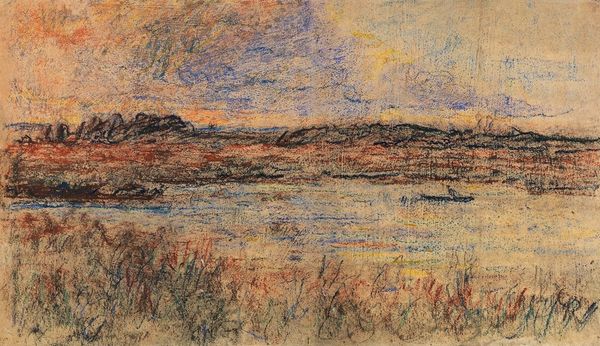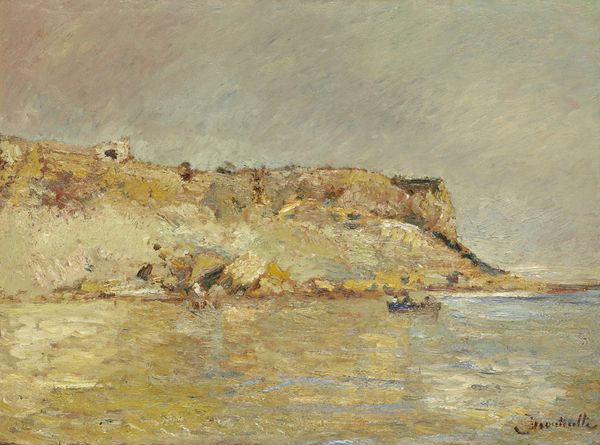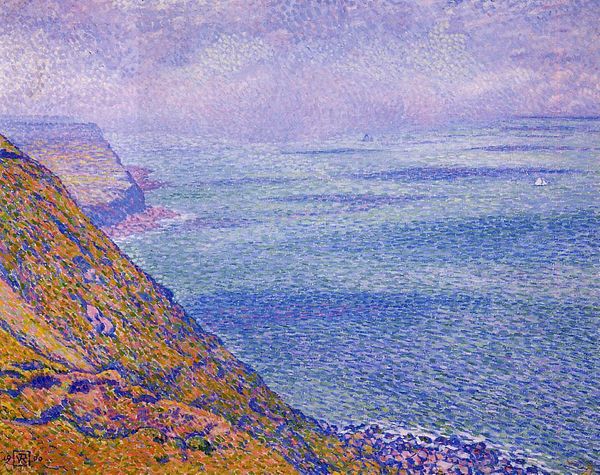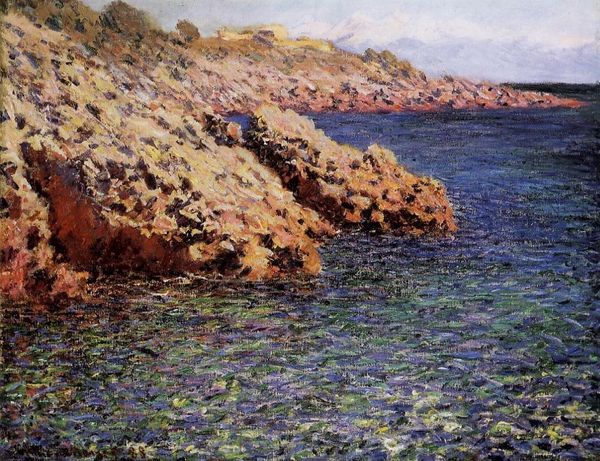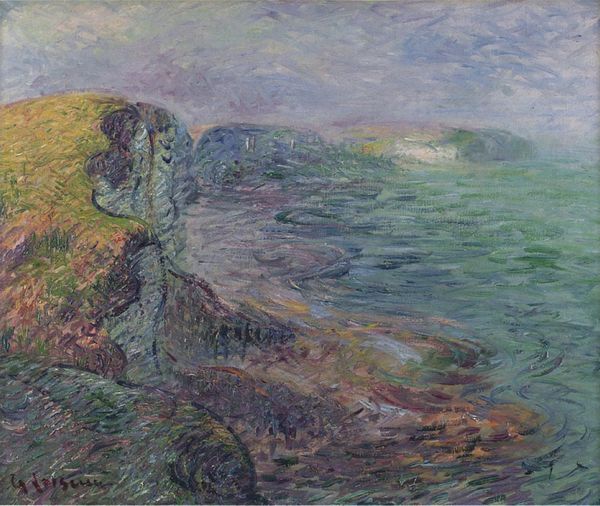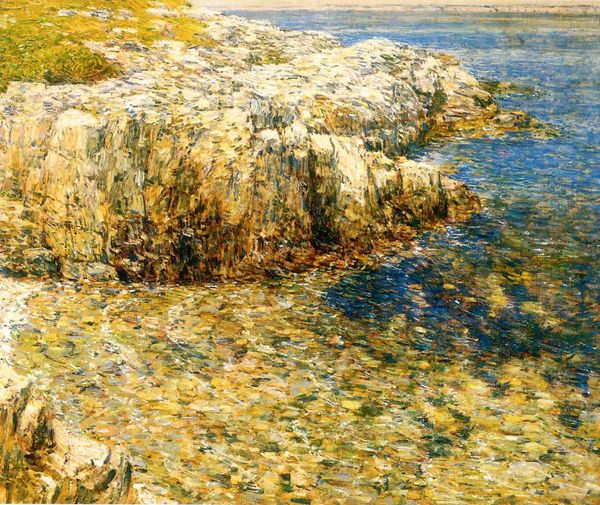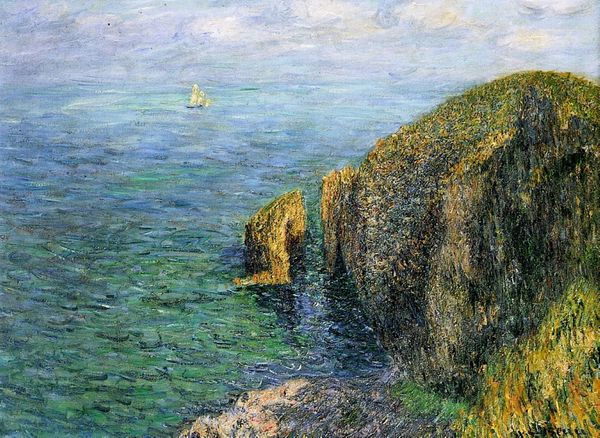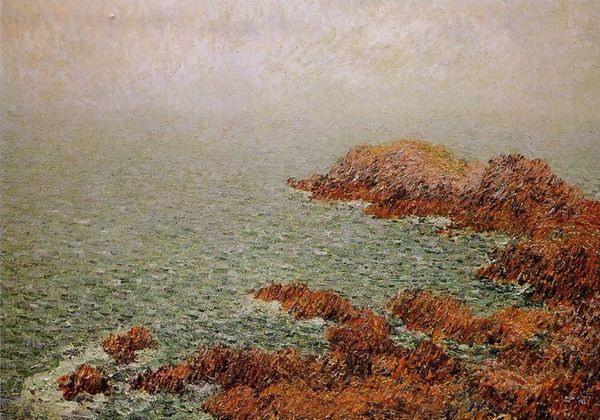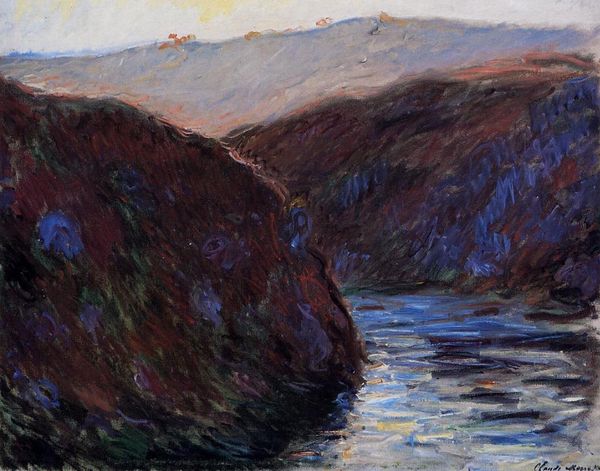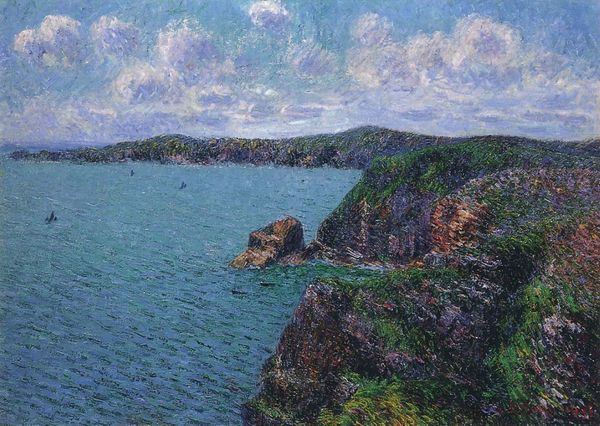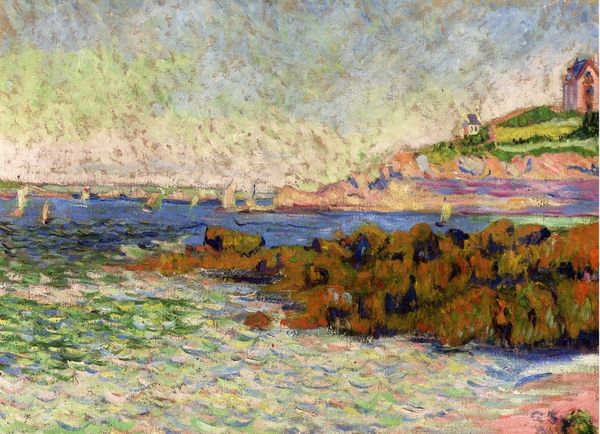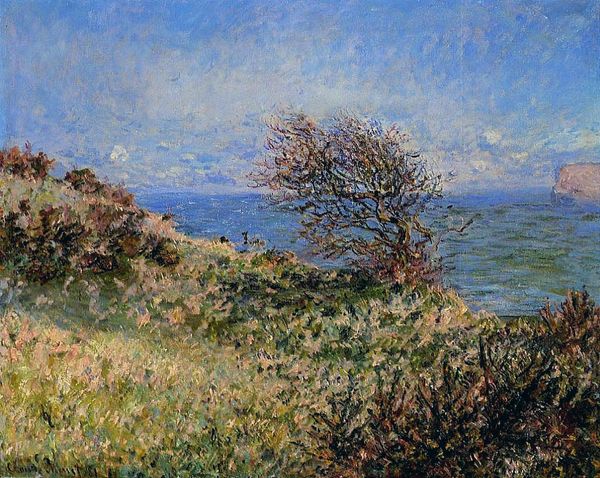
Copyright: Public domain
Curator: Gustave Loiseau’s "Ice on the Oise River," painted in 1905. There's something undeniably serene about the way Loiseau captured this landscape. Editor: Yes, I immediately feel a sense of stillness, almost melancholic. The subdued colors—those muted yellows, blues, and browns—create a palpable chill. I think the dark, almost black, water really adds to that. The visible brushstrokes almost feel agitated, creating a complex psychological state that is somewhat sad. Curator: Absolutely. Loiseau was part of that second generation of Impressionists, working in the wake of figures like Monet and Pissarro. These landscapes, like many others from the Impressionist era, reflect more than just a simple depiction of the physical world, they illustrate a key aspect of plein-air painting. We should consider how socio-political forces shaped the perception and subsequent romanticisation of nature and landscapes during the late 19th century in France. Editor: And how that idealisation might exclude realities of rural labor and class division, creating a false dichotomy in French society. Thinking about those textured strokes, the density with which the paint is applied— it's almost a tactile representation of the weight of that social dichotomy that he is experiencing. Curator: I'm inclined to agree. But the painting itself, particularly its location along the Oise river, allows us to further think about French artistic culture during the impressionistic period. Editor: Definitely, and on an emotional level, this image almost represents some collective suffering by portraying the stark nature and winter of the French lands. It feels aligned with the anxieties prevalent within France at the turn of the century. Curator: So, through the artwork and its landscape, we are in the context of nature’s public role for culture and identity during the period of 1905. Editor: Precisely. Curator: I appreciate how viewing a serene landscape has led us into some uncomfortable conversations. Editor: Art should be a reflection of social realities—provoking necessary discourses that help recontextualize societal problems.
Comments
No comments
Be the first to comment and join the conversation on the ultimate creative platform.
